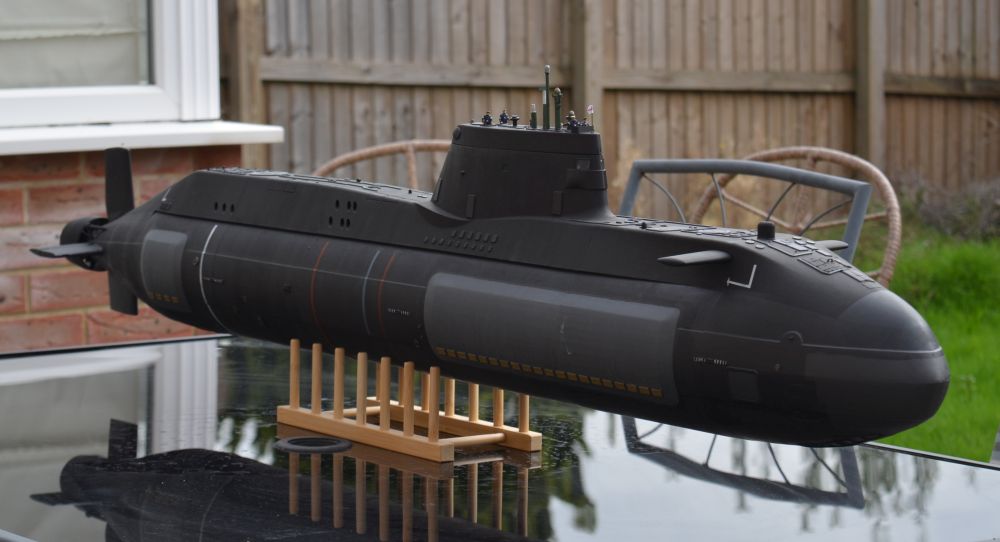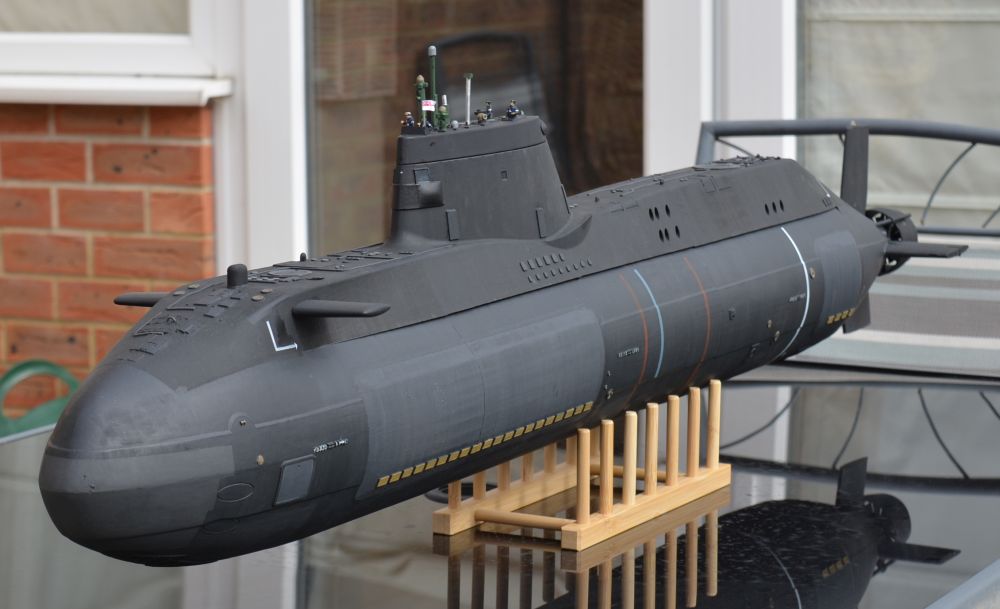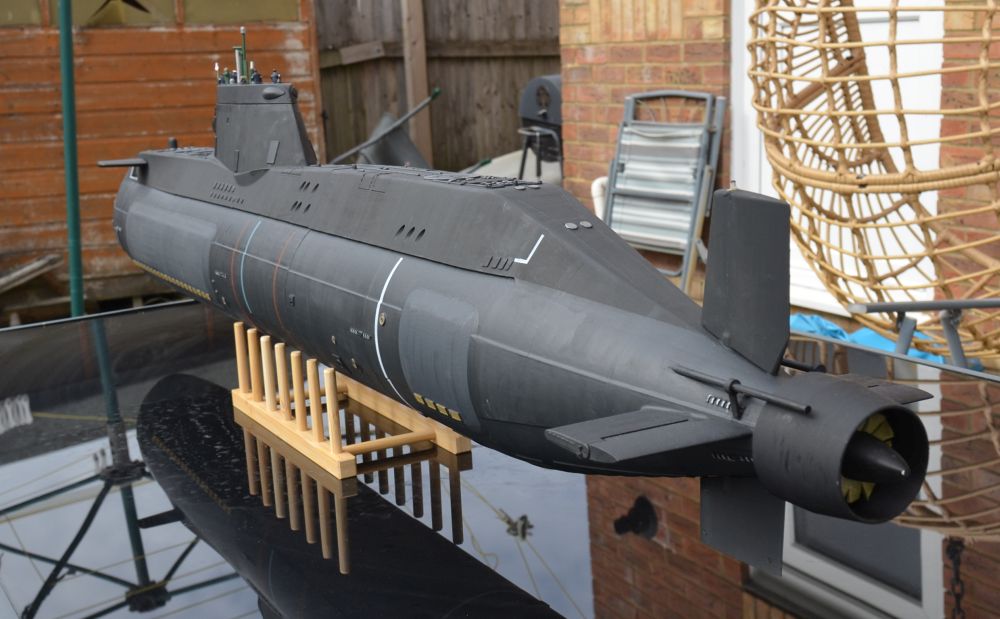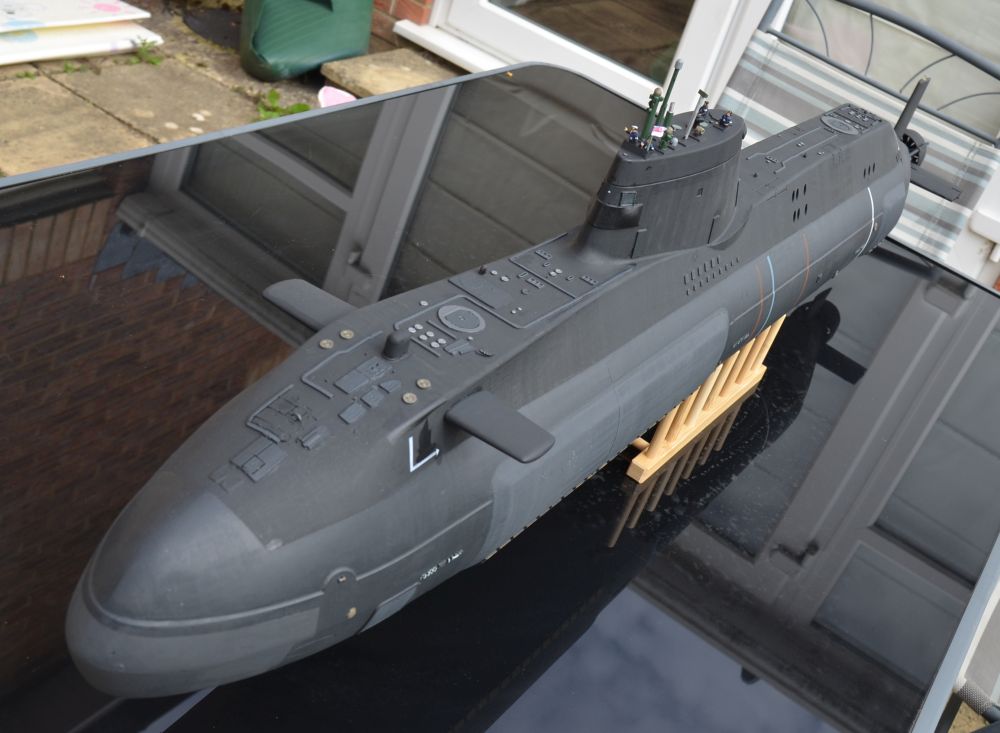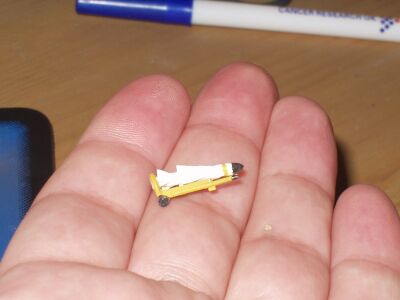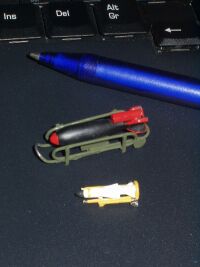The Wet Side -
![]()
Higgins Boat LCVP Landing Craft. US Navy/Coastguard,
Omaha Beach, "Easy Red sector" Normandy, 6 June 1944.
Airfix -
'Andrew Higgins.is the man who won the war for us. If Higgins had not designed and
built those LCVPs, we never could have landed over an open beach. The whole strategy
of the war would have been different.' -
The Higgins Boat LCVP (Landing Craft Vehicle & Personnel) was a superb yet simple design, that revolutionised amphibious warfare. Over 20,000 were built, and saw service in all theatres during WW2, from the landings in North Africa, through Sicily, Normandy and on to the Pacific. Later on, it would see further service in Korea and even Vietnam.
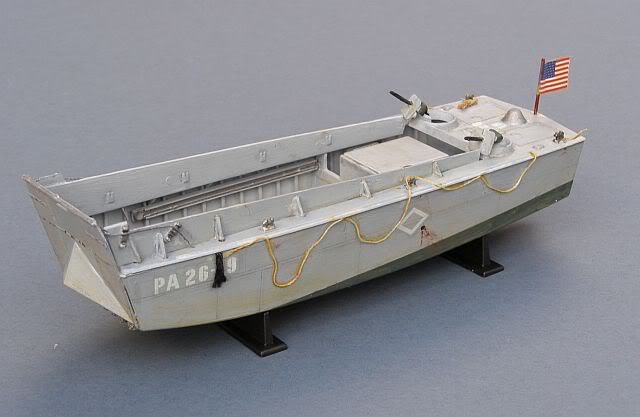
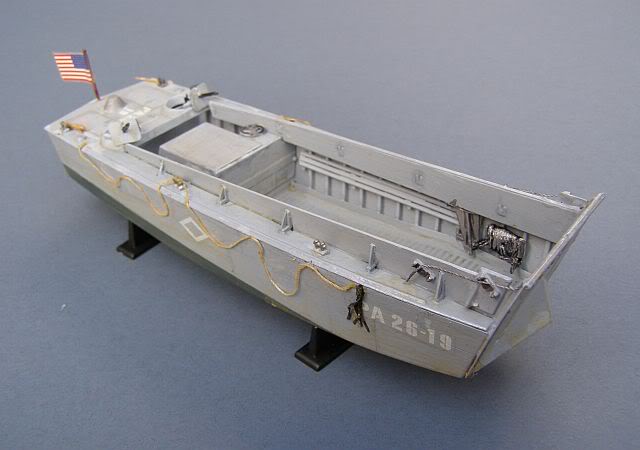
Vosper Perkasa Patrol Boat (Tamiya)
The 1/72 Tamiya Vosper Perkasa Patrol Boat.
The RN still operated several of these (albeit slightly smaller) in 1981 as FPB Training Boats (they used to attack you during the weekly Thursday War at Portland, usually by creeping up hidden behind a tanker). A "Luxury Yacht" version of this gas turbine powered boat sits in Haslar Marina at Portsmouth. Only one was ever built and it is finished in a beautiful gloss midnight blue; I pass it each time I go yachting and it has fascinated me for years. These days, I am not sure anyone can actually afford the fuel to take it out to sea!
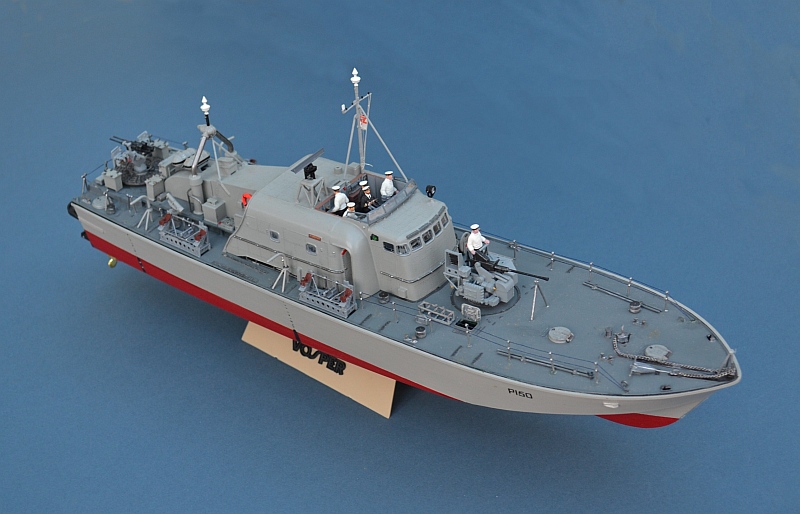
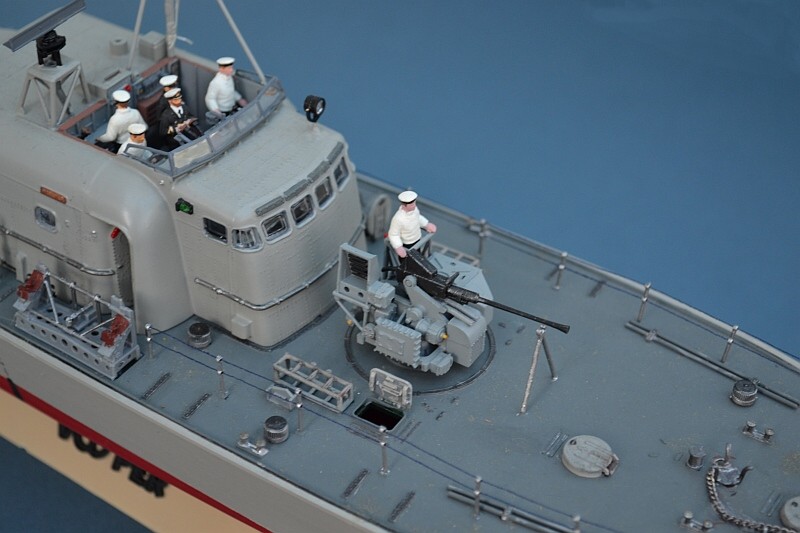
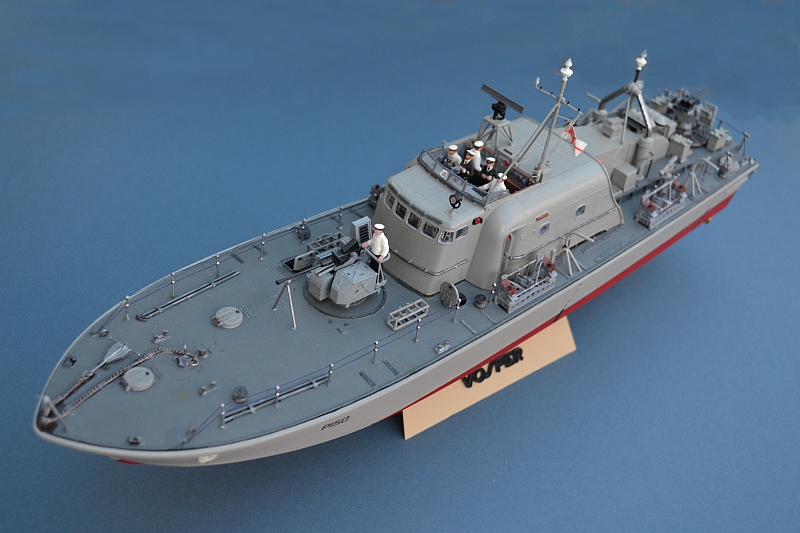
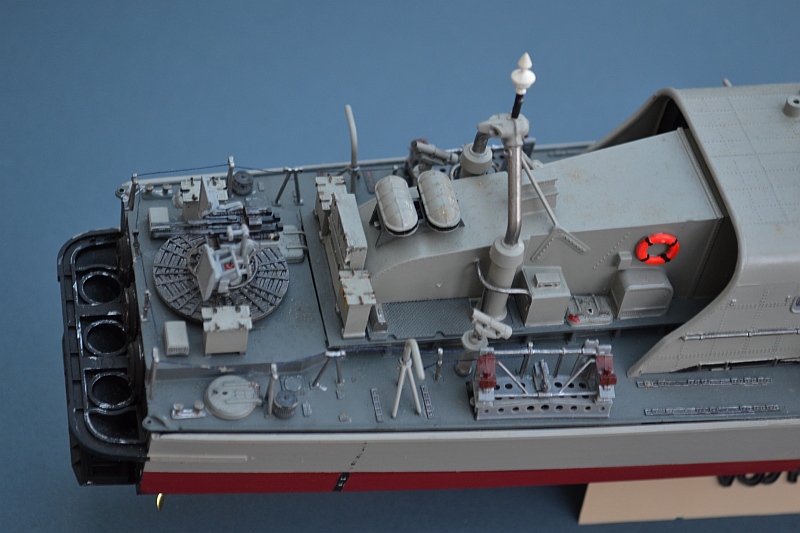
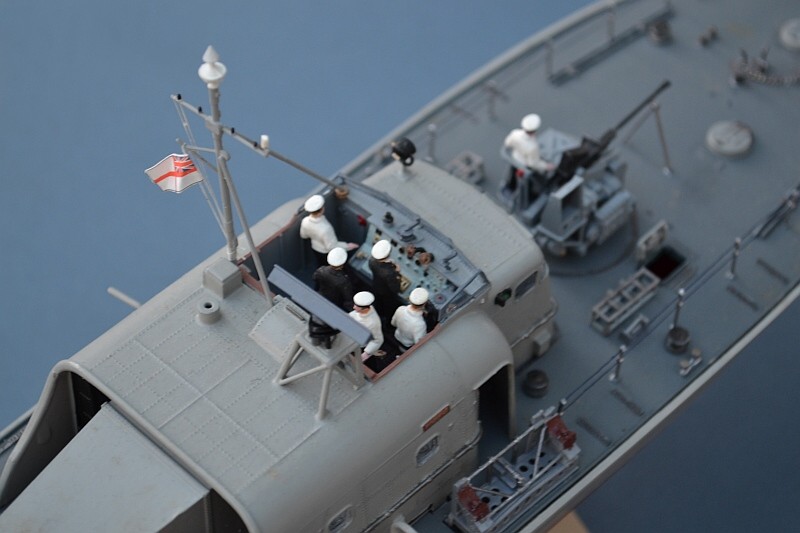
HMS TIGER (post ASW Helicopter Cruiser Conversion) (Matchbox)
HMS TIGER was the first RN ship I ever went onboard (at Leith Docks in the 1970s). From an early stage in my youth I watched her sister ship LION sitting in Inverkeithing/St Davids harbour being broken up. When I joined the RN I found her other sister ship, BLAKE, sitting in Chatham, in reserve. Then, throughout the 1980s, I regularly sailed my dinghy around TIGER herself as she sat forlorn on the Portsmouth trots awaiting disposal. Long gone now; but these were real warships. Sad.
Landing Craft Assault (LCA). Royal Navy / Royal Marines,
Sword Beach, 47 Commando Royal Marines -
Armageddon -
The British and Commonwealth equivalent of the LCVP was the LCA. More complex than the US vessel with twin engines and armour, it was particularly suited to special ops and landings on difficult beaches. As well as its use by British and Canadian forces in their sectors, Elite US forces were landed from RN manned LCAs on the US landing beaches.
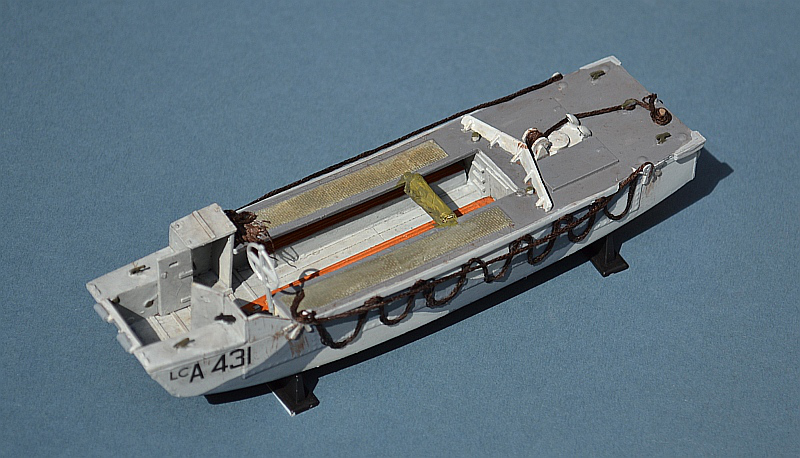
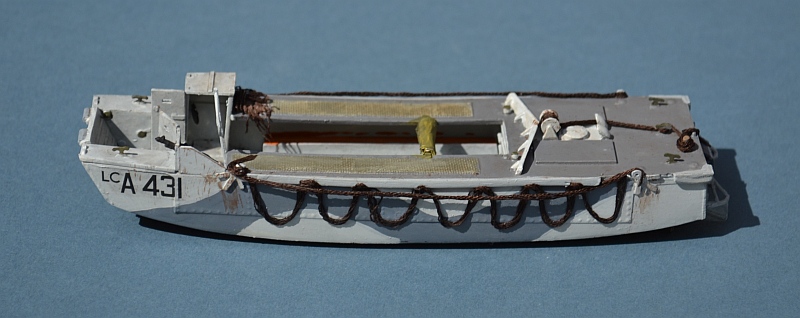
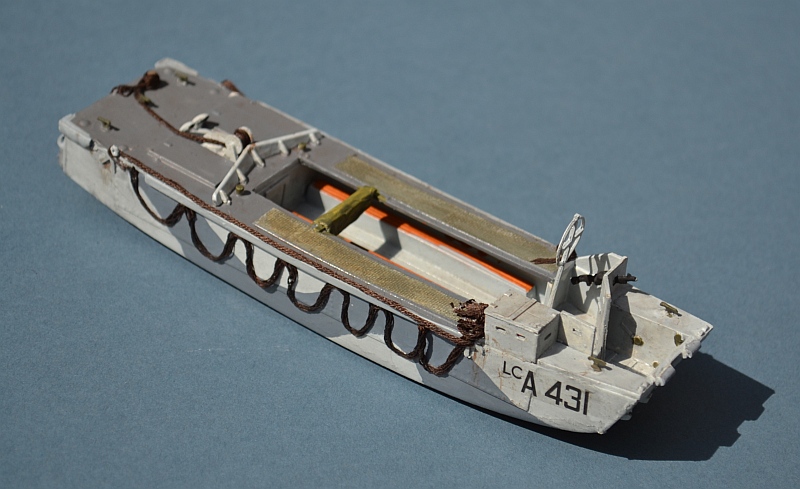
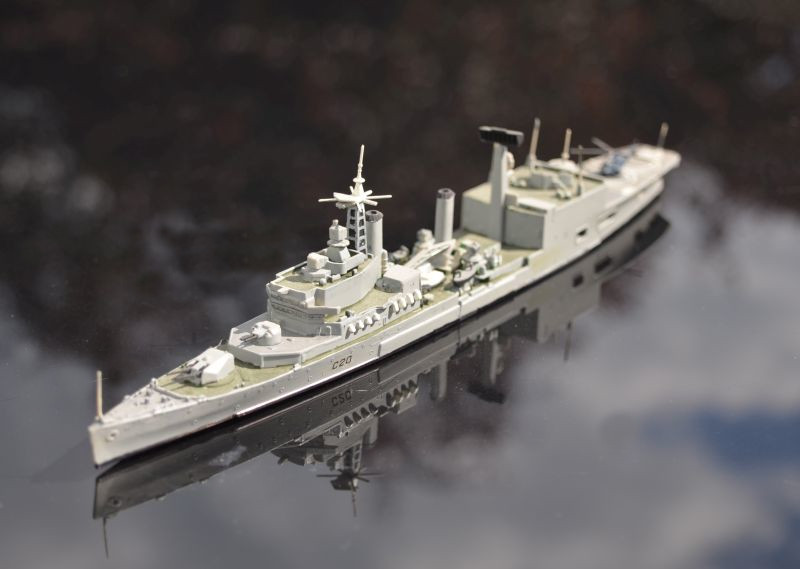
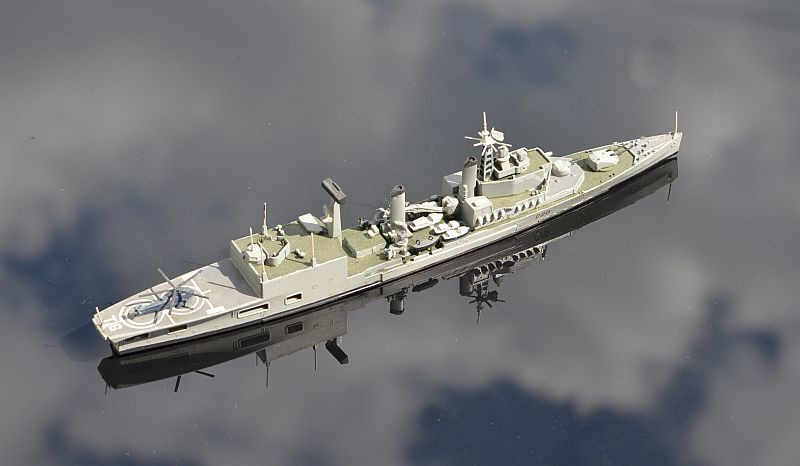
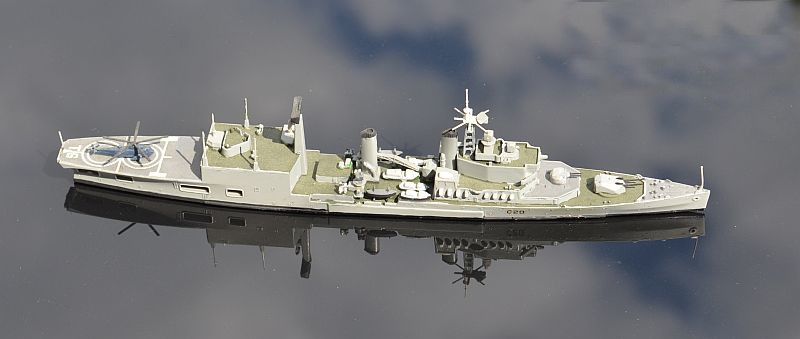
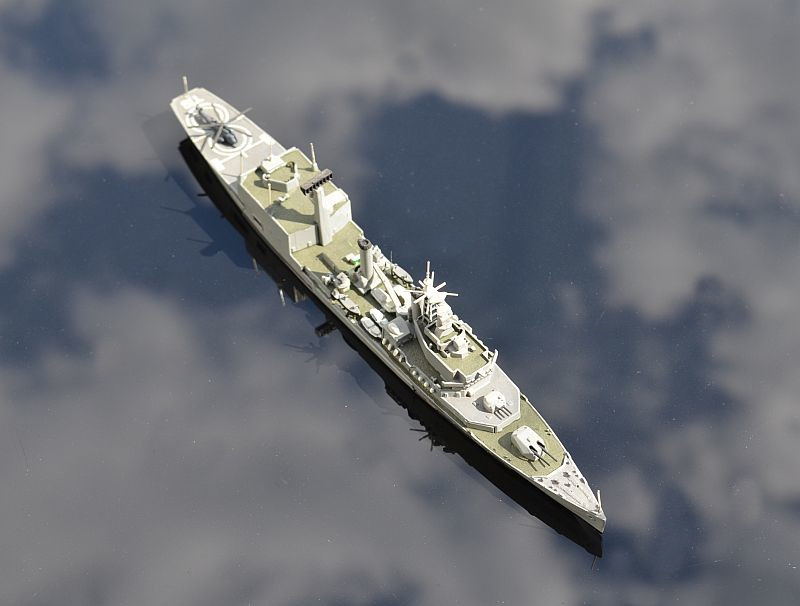
HMS AMBUSH, Astute Class SSN, Clyde 2013.
Hobby Boss 1/350 (link to build page)
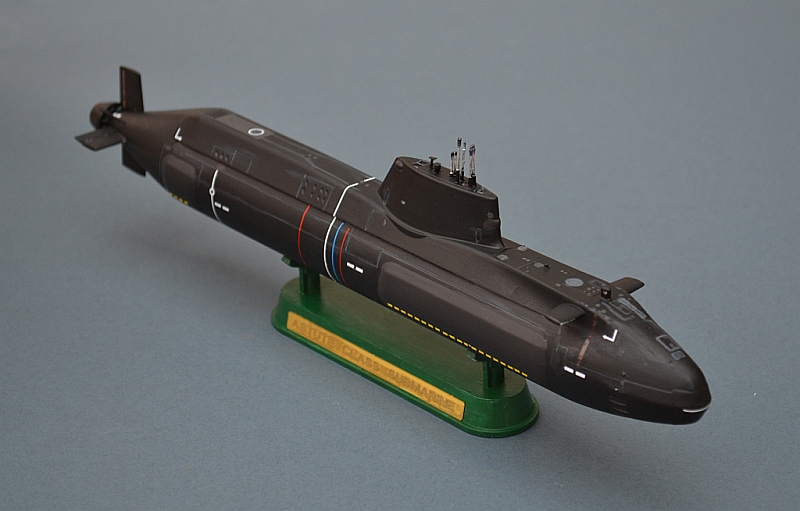
The ASTUTE Class is the Royal Navy's latest nuclear powered attack submarine. Armed with advanced guided Spearfish torpedoes which are capable of travelling at up to 150 Km per hour and underwater launched Tomahawk Land Attack Cruise Missiles, the ASTUTE class is equally capable in combat against surface ships and other submarines or against land targets up to 2,500 km away. Special stealth measures reduce the submarines sonar, noise and radar signatures, to render her almost undetectable when on patrol in the worlds oceans.
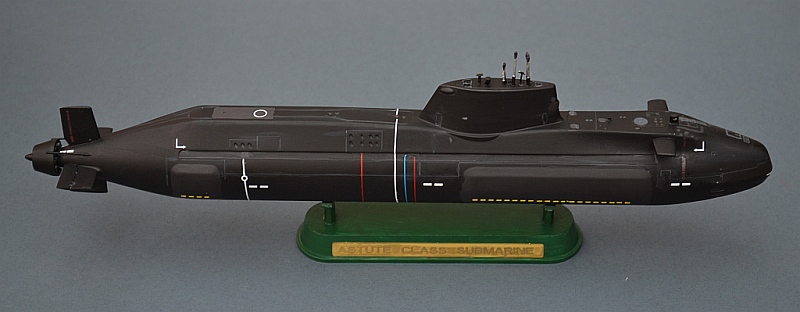
HMS AMBUSH is the second of the 7 strong class of SSNs to be built and was commissioned into Royal Navy service in March 2013. She will be followed in due course by HM Submarines ARTFUL, AUDACIOUS, ANSON, AGAMEMNON and AJAX.
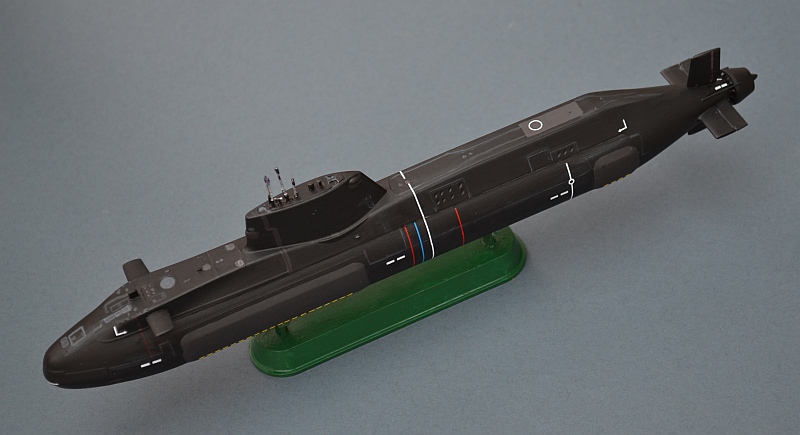
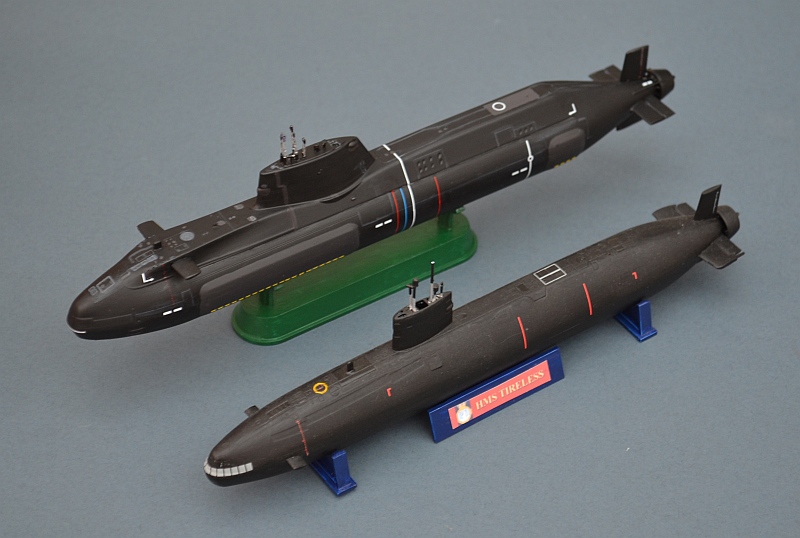
HMS TIRELESS, Trafalgar Class SSN, AUTEC, 1987.
Airfix 1/350
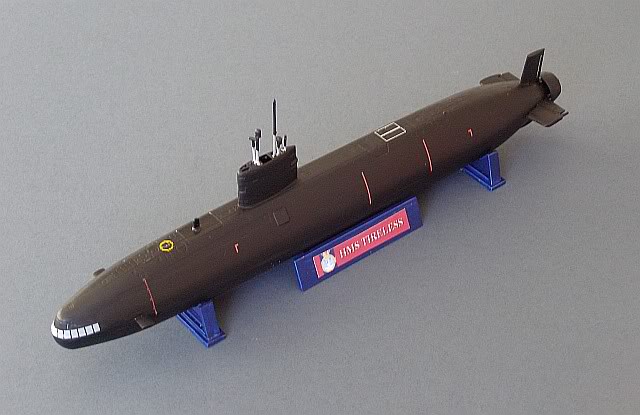
The Royal Navy's Trafalgar Class nuclear hunter/killer submarines remain one of the
most advanced, quiet and effective submarines ever built. Designed to hunt down enemy
submarines and shipping, their principle armament is the Spearfish torpedo, although
in the past they have also carried Harpoon anti-
HMS TIRELESS was the third of the class. Capable of deploying anywhere around the
world within a week, without the need for any external support, and with minimal
risk of detection, the SSN is still the capital ship of modern naval warfare and
the T-
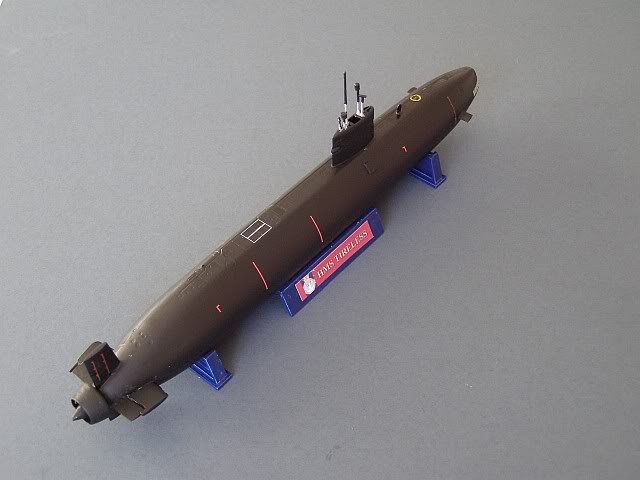

HMS VANGUARD, Faslane 2010.
Bronco, 1/350
The 4 Royal Navy Submarines of the Vanguard Class carry the United Kingdom's nuclear deterrent, in the form of Trident D5 missiles. Slightly smaller than the US Navy's otherwise similar Ohio class, they have continue to maintain the UK's unbroken Continuous At Sea Deterrent (CASD), ensuring that utlimate force remains available to the UK government at all times.
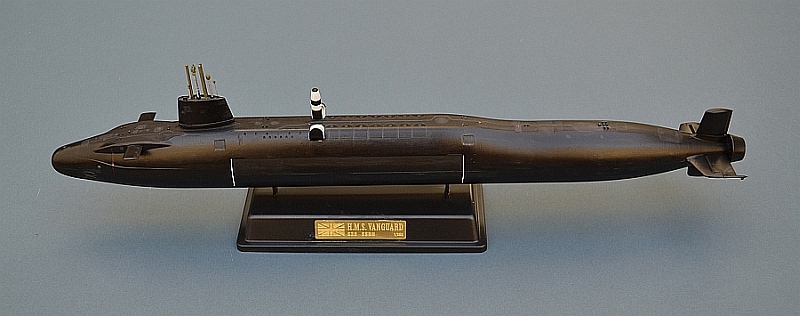
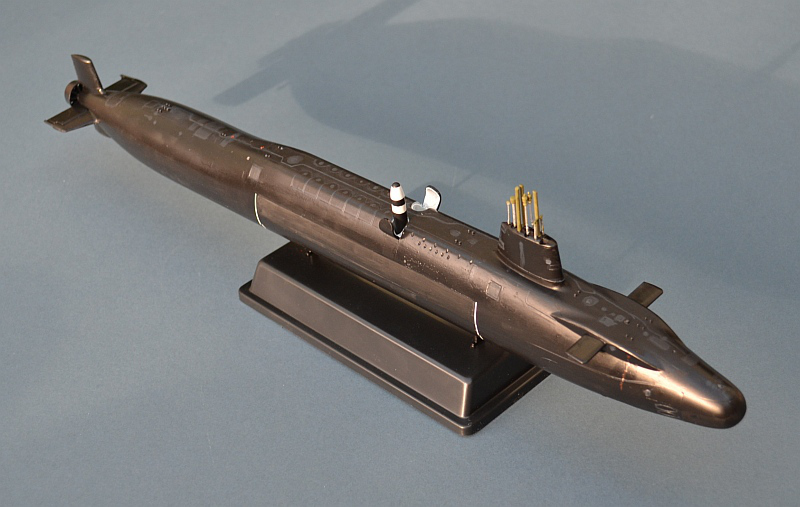
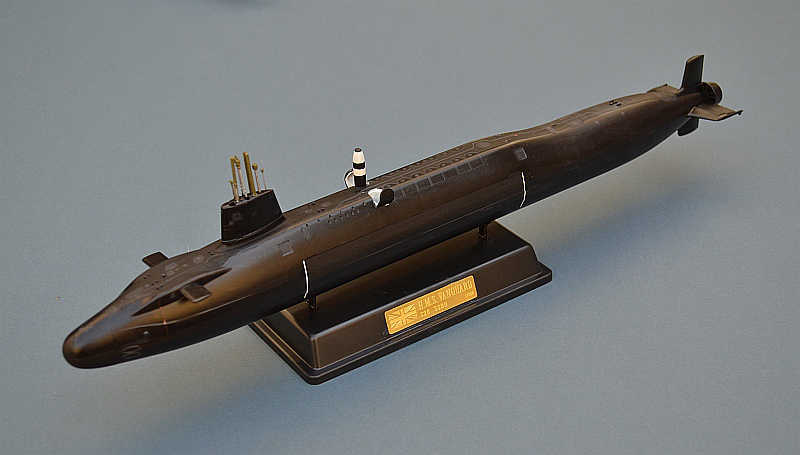
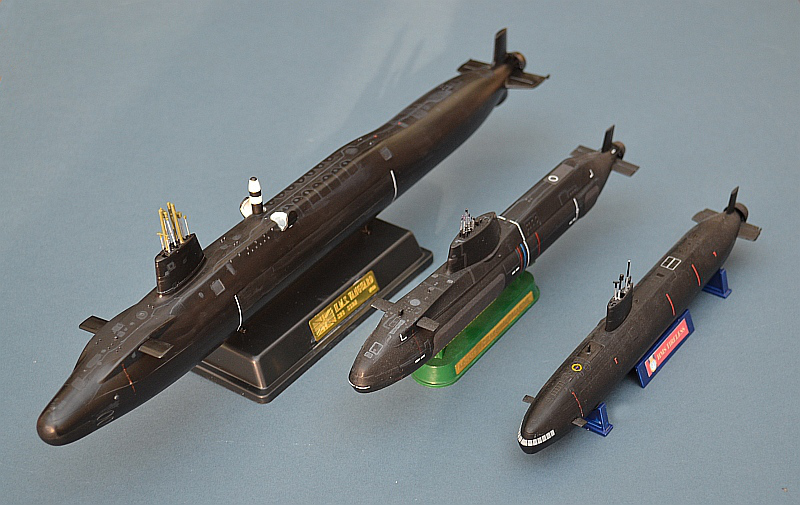
HMS ILLUSTRIOUS, Operation Palliser, Sierra Leone 2001.
Dragon, 1/700
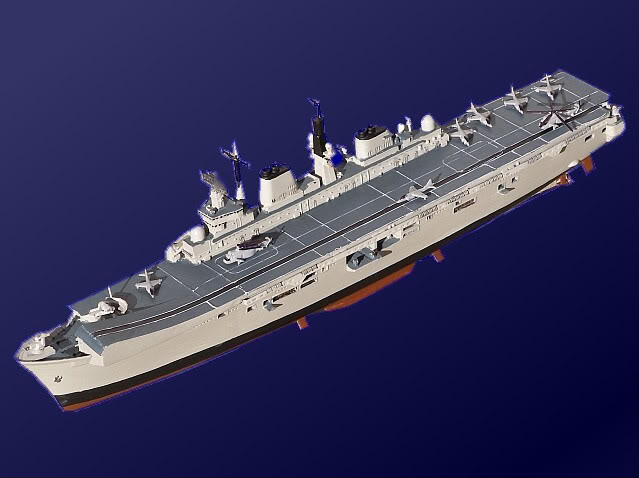
The INVINCIBLE Class carriers have been the backbone of the Royal Navy's carrier
force since the early 1980s, seeing active service in the Falklands, Adriatic, Gulf
and West Africa in addition to their intended Cold War duties. Designed in the 1970s
as a "Through Deck Cruiser", in order to overcome political objections to aircraft
carriers, they were originally intended as Anti-
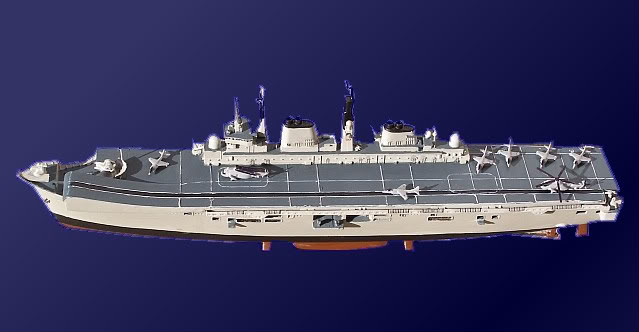
During the building of this kit, the UK Government announced its Strategic Defence
& Security Review, which included the removal of the Harrier Fleet and early disposal
of HMS ARK ROYAL (INVINCIBLE decommissioned in 2008). The future of ILLUSTRIOUS is
uncertain; a decision on whether ILLUSTRIOUS or OCEAN will remain as a Commando Helicopter
Carrier will be taken shortly. However, with real decisions on the future of the
(aircraft-
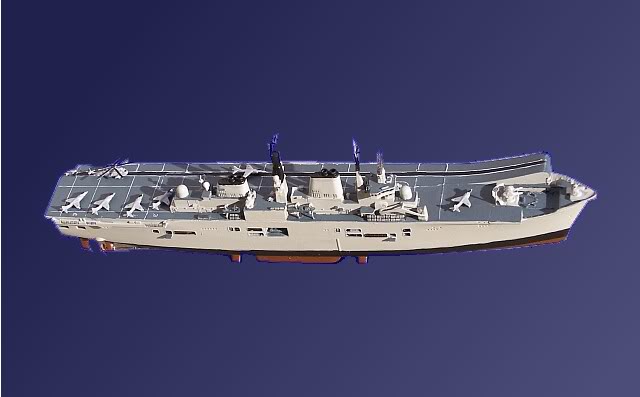
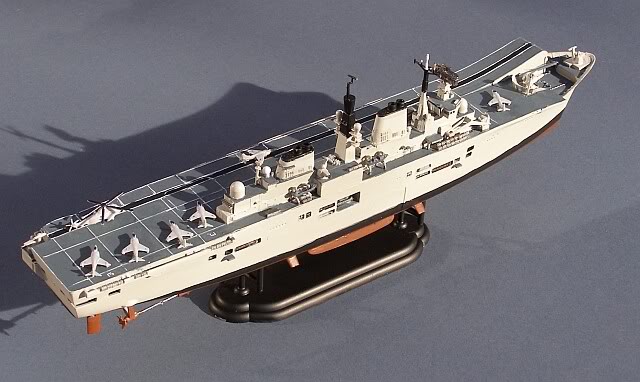
Type XXVIIb Seehund Mini-
Revelll (ex ICM) model.
The Type XXVII Seehund (German for seal), was a successful series of midget submarines created during World War II. Designed in 1944, and operated by two man crews, the submarines were used by the Kriegsmarine during the closing months of the war, sinking 9 merchant vessels and damaging an additional 3, with 35 losses mostly attributed to bad weather.
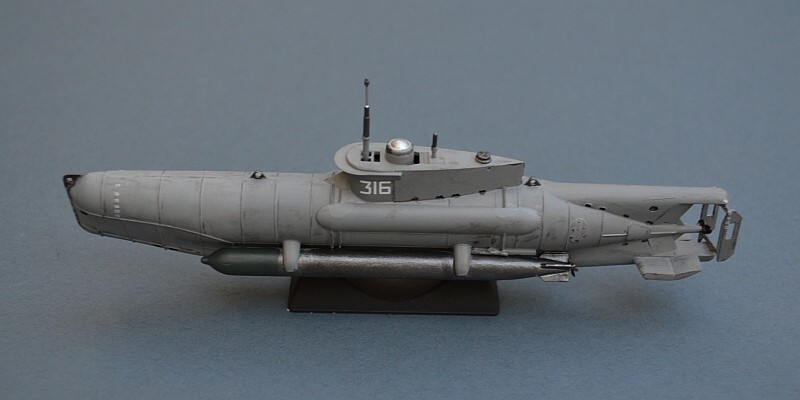
The Seehund was inspired by the daring British X-
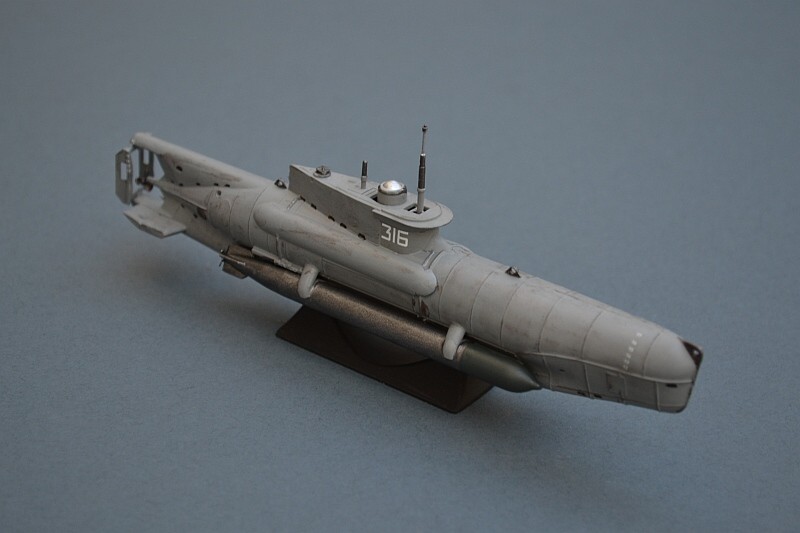
The French navy received four units as war reparations, and commissioned them as S 621, S 622, S 623 and S624. They were used until August 1953. S 622 is preserved and on display at Brest naval museum.
Edinburgh Coporation Bus, AEC Regent III, 1950.
Tower Models 1/76 RTL London Bus, repainted to become an Edinburgh AEC Regent
AEC Regent buses, carrying a Metro Cammel Coach Works body, were used in comparatively small numbers by Edinburgh Corporation during the 1950s and 1960s (most Edinburgh buses at that time were either Guy Arabs, Daimlers or the Leyland PD2/PD3 Titan, which is also very similar to an RTL, but has a large "tin front" grillle).
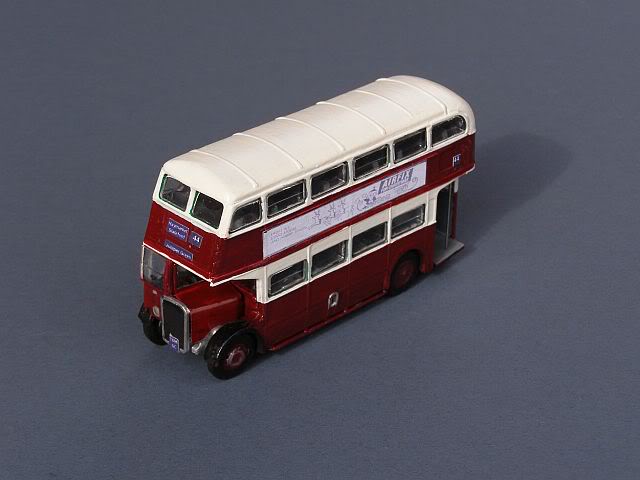
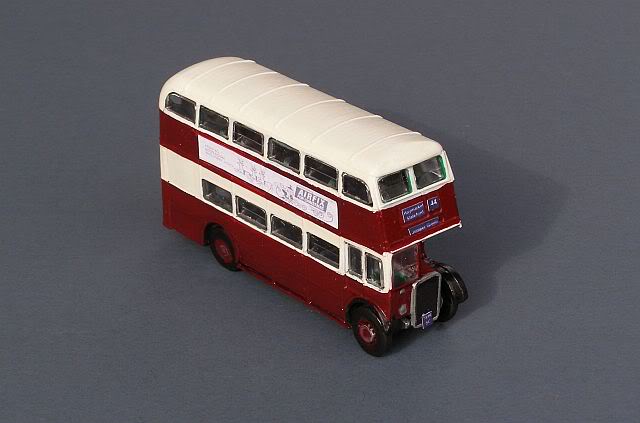
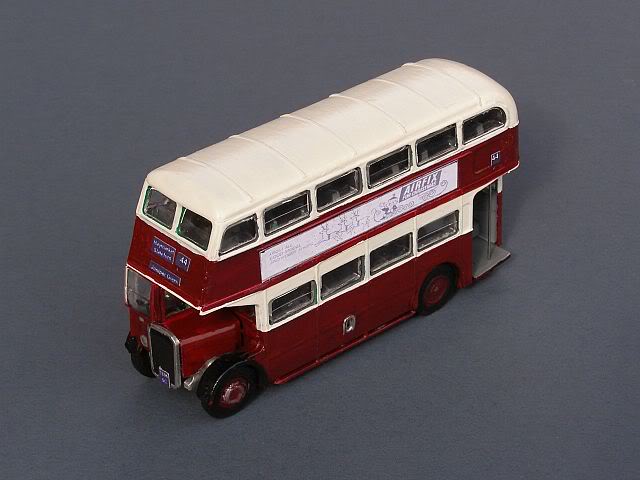
LCVP Mk 5,
1/72 Airfix LCM3 with substantial modifications
The LCVP Mk5 is the Current Royal Navy/Royal Marines assault landing craft. It can travel at up to 25 Knots, with a range of over 200 miles. It has the capacity to carry 35 fully equipped Royal Marines or light vehicles such as Land Rovers or the Bv206.
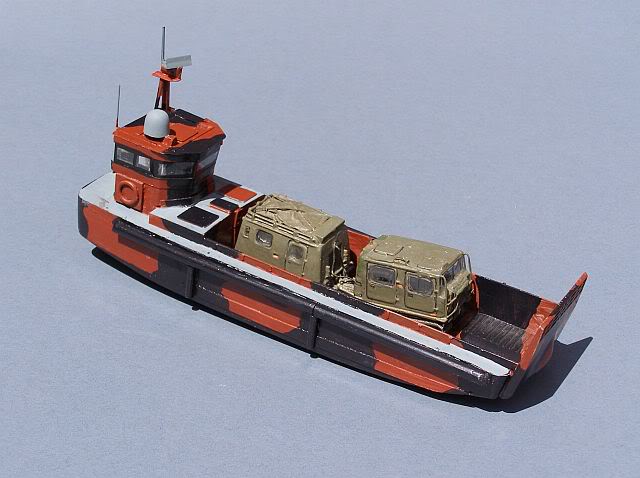
This is a piece of pure indulgence and silliness on my part, using scrap items that
would otherwise have ended up as land-
The WW2 LCM3 and present day LCVP5 are similar in size. This is a generic likeness of an LCVP5; I make no claims whatsoever of accuracy.
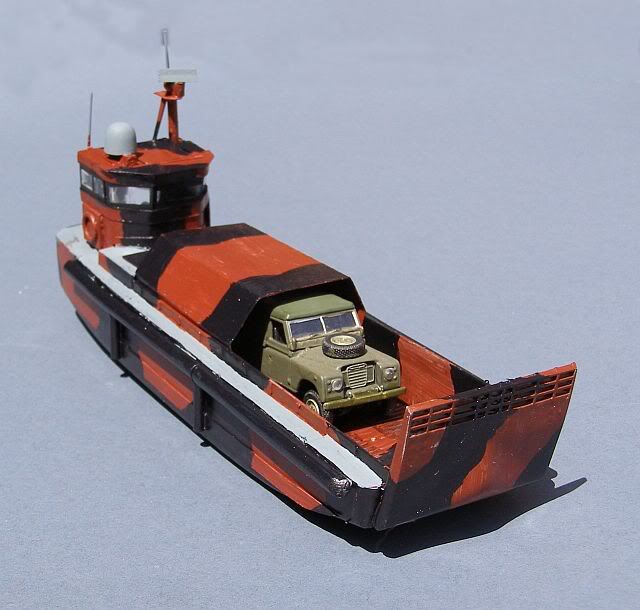
British Aerospace Sea Dart Area Air Defence Missile. Royal Navy (Type 42 Destroyers) 1988
Based on a spare Phoenix missile (which is a similar shape), with scratch wings, booster and nose radome:
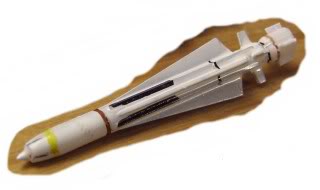
BAe Seawolf Point Defence missile. Royal Navy (Type 22 & Leander BII Frigates) 1996
Have you ever noticed that paper clips look like bomb trollies? No; well neither had I until I built this diddy little Seawolf on its loading trolley, whilst waiting for something to set. Missile & Wheels are Sprue. (took me ages to build the giant hand & pen).
Naval Nuclear Depth Bomb (WE177)
OK its not quite the right shape or even colour.
Paperclip trolley looks good though! Mind you it might be better suited to a Torpedo.
www.gengriz.co.uk
HMS A––––––-
3D Printed 1/72 (link to build page)
The ASTUTE Class is the Royal Navy's latest nuclear powered attack submarine. Armed with advanced guided Spearfish torpedoes which are capable of travelling at up to 150 Km per hour and underwater launched Tomahawk Land Attack Cruise Missiles, the ASTUTE class is equally capable in combat against surface ships and other submarines or against land targets up to 2,500 km away. Special stealth measures reduce the submarines sonar, noise and radar signatures, to render her almost undetectable when on patrol in the worlds oceans.
